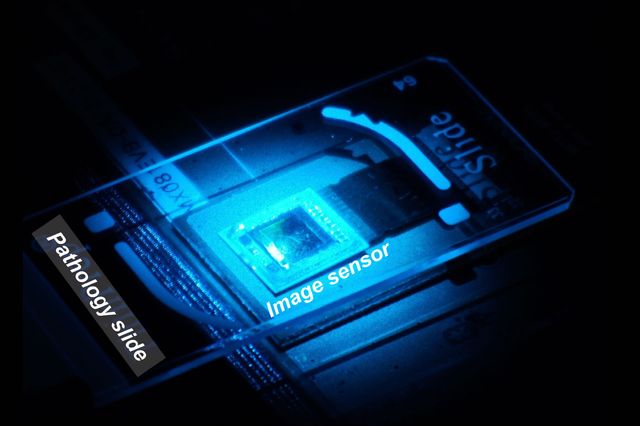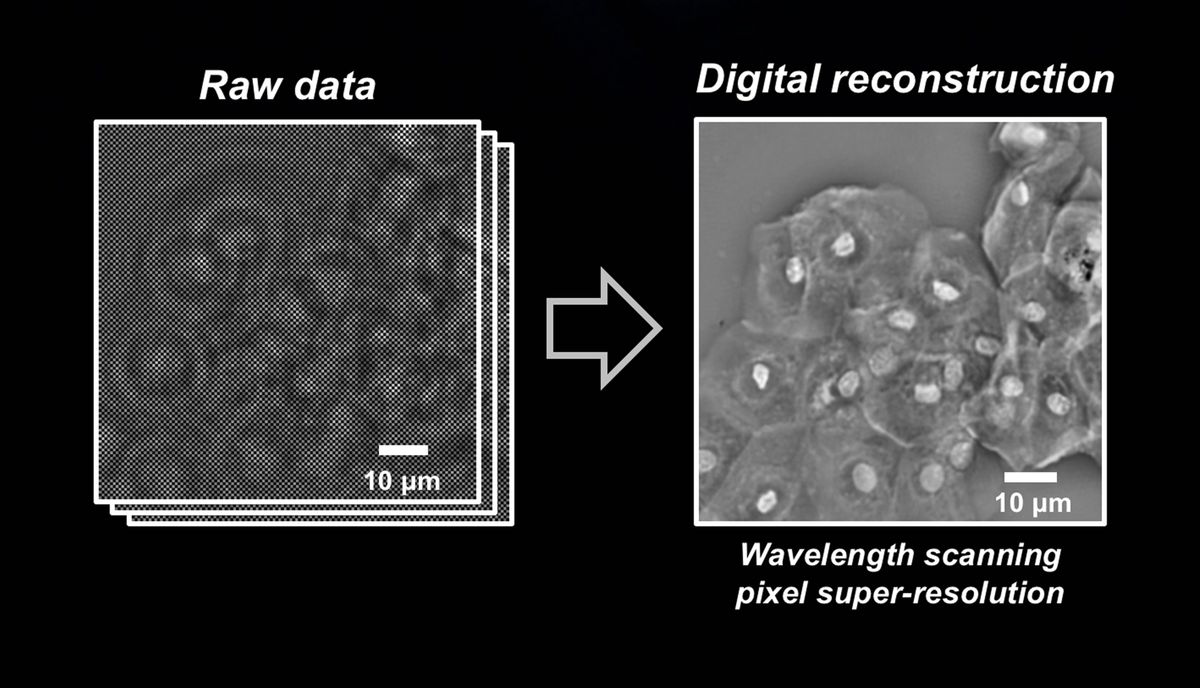
New device enhances digital microscope imaging for better disease detection
While digital imagery has been especially helpful in microscopy, sometimes the images result in blurry and pixilated images.
A team of researchers from the California NanoSystems Institute at UCLA has created a new technique that greatly enhances digital microscopy images and combats this problem.

The new technique is called wavelength scanning pixel super-resolution and employs a device that captures a stack of digital images of the same specimen, each with a slightly different wavelength of light. When the images are captured, the researchers apply a newly devised algorithm that divides the pixels in each captured image into a number of smaller pixels. This results in a higher-resolution digital image of the specimen.
“These results mean we can see and inspect large samples with finer details at the sub-micron level,” said Aydogan Ozcan, Chancellor’s Professor of Electrical Engineering and Bioengineering at UCLA. “We have applied this method to lens-based conventional microscopes, as well as our lensless on-chip microscopy systems that create microscopic images using holograms, and it works across all these platforms.”

The new technique could potentially impact pathology, allowing for rapid microscopic imaging of large numbers of tissue or blood cells, which is key to diagnosing diseases such as cancer. In their tests, the researchers actually used blood samples, used to screen for various diseases and Papanicolaou tests, which are used to screen for cervical cancer.
The entire device fits on a desktop, so it is convenient for doctors and scientists using microscopes in resource-limited settings such as clinics in developing countries.

Comments are closed, but trackbacks and pingbacks are open.